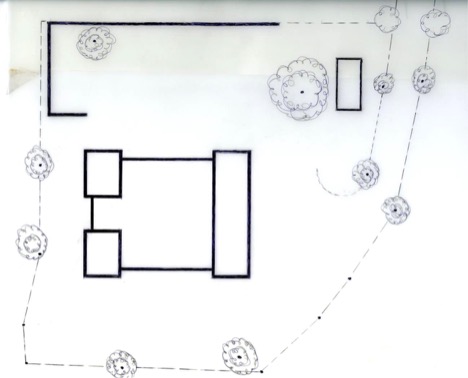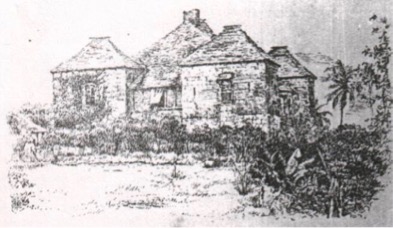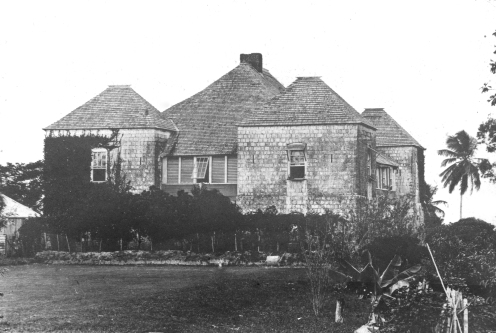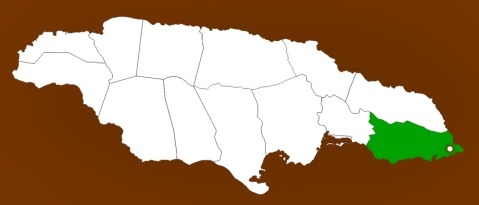Stokes Hall Great House

Luke Stokes, the governor of Nevis, invaded the extreme southeast corner of Jamaica and drove out the Spanish in 1656. The Spanish called the area Hato de Morante (Ranch of Morant). Luke Stokes along with 1,600 other settlers were the first Englishmen to Jamaica. He later called the area Stokesfield. The area is part of the Plantain Garden River and Negro River delta and is the most fertile area in Jamaica, due to the periodic flooding by the river. The mountains to the north receive approximately 250 inches of rain a year and along with an occasional hurricane, cause a large bed load of soil to spread out over the delta. It was along this river, many prosperous sugar estates were established among which were Stokes Hall, Golden Grove, Duckenfield Hall, Holland, Amity Hall, Hordley, Hampton Court, Winchester and Wheelerfield. Much like the Nile River in Egypt, floods brought down new fertile soil for the crops. Unfortunately, the river delta was also a breeder of mosquitoes, which brought malaria and yellow fever. Luke Stokes, his wife, and two-thirds of the settlers died within a couple of years. The remaining settlers moved to higher ground, which they called Stokes Hall. Stokes Hall was adjacent to the road that passed from Kingston, through Port Morant and on to the estates at the mouth of the Plantain Garden River, Holland Bay. Up until the mid-1800s, Port Morant was one of the most important sugar shipping ports in Jamaica, but with the decline of king sugar due to the slave emancipation it became the small fishing village it is today. Stokes Hall Great House, in historical documents is referred to Stokes Hall Slave House because it was built by slaves brought from Nevis by Luke Stokes. It is one of the oldest English ruins on the island of Jamaica and built by Luke Stokes’ children. Like many early great houses in Jamaica, it was built more like a fortress than a house. Gun holes are still evident in the building walls. In 1840, the Stokes Hall and the adjacent Hampton Court sugar estates were owned by Alexander Donaldson and consisted of 1,443 acres. An earthquake destroyed the great house in 1907. The road up the hill was called Negro House road because it was lined with slave houses. Today, the view from Stokes Hall Great House is spectacular. Toward the east and south is the extensive river delta covered with sugar cane with the Duckenfield Hall sugar mill in the distance. It was sugar cane harvesting and the recently brown reaped fields were checker-boarded among the green cane fields. To the north, the Blue Mountains made up the skyline. The ruins of the great house consist of three remaining towers, the foundations of the kitchen outhouse and a water tank. The house is make of concreted rock rubble faced with dressed stone. Evidence of a stucco coating remains in some areas. Although there is some fancy arch work on the outside windows and doors, the lintels are really made of timber.  There are a series of directional signs after one passes Morant Bay coming from Kingston. However, as most Jamaican sights, the signs are only good from one direction. In this case, it is well marked coming from the west but if you are coming from the east, you will never see the signs. The final sign is a bit confusing. Just before, you get to the village of Golden Grove, the final sign points toward a dirt road, but could be construed to be indicating to continue on the paved road. Where the paved road crosses Pleasant Hill across from the bus stop is the dirt road that continues up the hill to the great house.
There are a series of directional signs after one passes Morant Bay coming from Kingston. However, as most Jamaican sights, the signs are only good from one direction. In this case, it is well marked coming from the west but if you are coming from the east, you will never see the signs. The final sign is a bit confusing. Just before, you get to the village of Golden Grove, the final sign points toward a dirt road, but could be construed to be indicating to continue on the paved road. Where the paved road crosses Pleasant Hill across from the bus stop is the dirt road that continues up the hill to the great house.
Photo believed taken in the 1930’s
Stokes Hall Great House Photo Gallery
















































We visited Stokes Hall at the end of February 2016 – the ruins every bit as atmospheric as your photos show, and great views towards the John Crow Mountains. (It took us a little while to realise that the roadside arrow was indicating the track and not to carry on down the paved road.) The grass is getting long again, and sadly someone someone has ringed the bark on the big tree. Our interest was that we live in a house designed by architect Robert Stokes, born in St Andrew in 1809, who was probably descended from this Stokes family. He arrived in Cheltenham, England, in 1831.
LikeLike
Yes, the turn off the paved road is confusing. That’s why I gave those directions in the post. I took off down the paved road for a few kilometer’s until I asked for directions. It is a neat ruin. Michael
LikeLike
My father-in-law was born at Stokes Hall. jd-glover@comcast.net
LikeLike
What was his name?
LikeLike